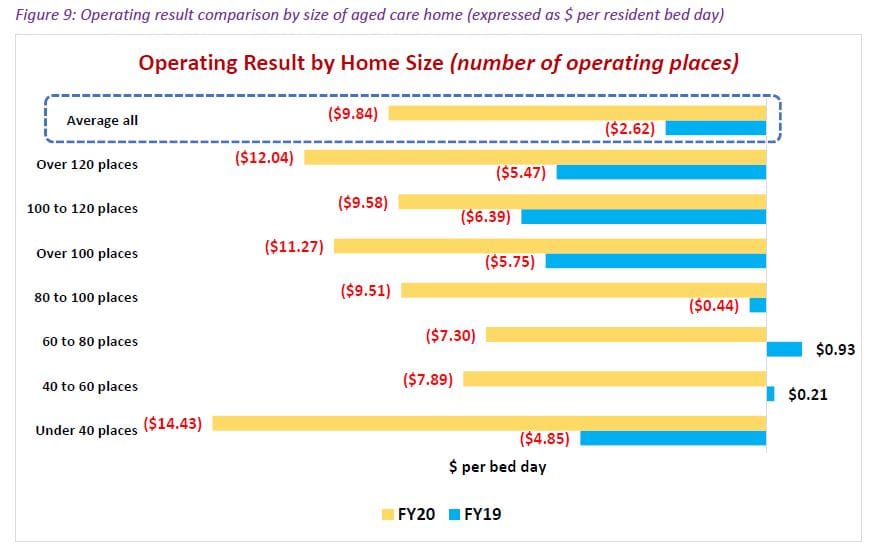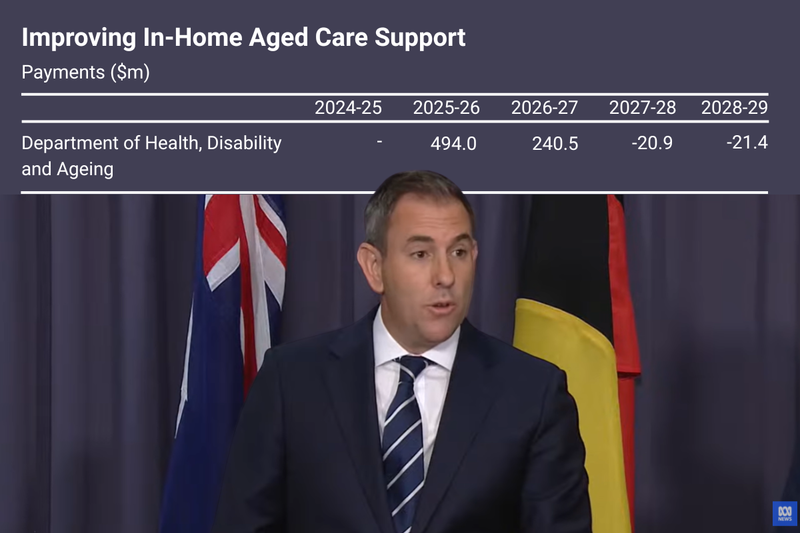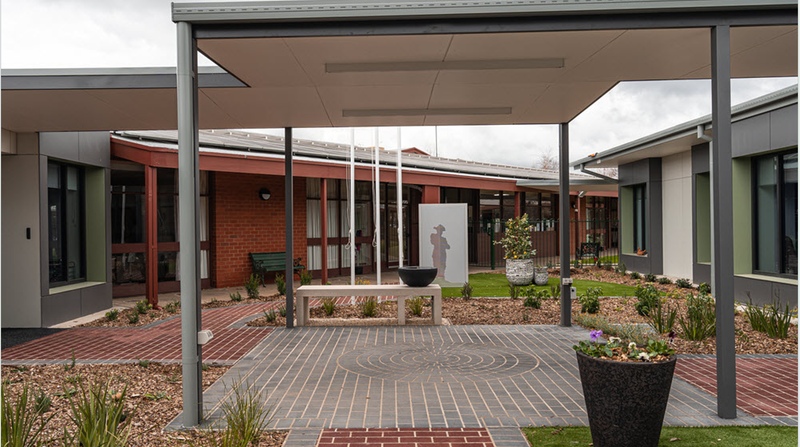Mid-size aged care homes come out on top in latest StewartBrown survey – Grant Corderoy says resident acuity and older-style buildings behind poor performance of larger facilities
The headline figure from the accounting firm’s latest financial performance survey was that 64% of providers are now making an operating loss – but the analysis also provides some interesting insights into which providers are managing to perform...

The headline figure from the accounting firm’s latest financial performance survey was that 64% of providers are now making an operating loss – but the analysis also provides some interesting insights into which providers are managing to perform better, even during COVID. Check out the graph above. It shows a changing shift in the operating performance of aged care home based on the number of available beds – and mid-range sizes are the clear winner.
Homes with less than 40 beds and over 100 the poor performers
As you can see, homes with fewer than 40 places fared the worst, recording a deficit of $14.43 in FY20, compared to a deficit of $4.85 in FY19. But homes with 120-plus beds also performed poorly, recording a deficit of $12.94 in FY20, followed by those with over 100 places at $11.27. StewartBrown says it is also starting to see this reflected in new buildings with homes between 70 and 90 beds now the preferred size for new developments. This is also being driven by the shorter lengths of stay in residential care, they add, which means it is taking longer for homes to initially reach the mature occupancy state than in the past. The report also points out that the number of vertical builds combining independent and assisted living and residential aged care is on the rise – again delaying entry to residential care.
Older-style homes inefficient to operate

We talked to StewartBrown Senior Partner Grant Corderoy (pictured), who leads the surveys.
He says the graph reflects an emerging trend over the last four to five years of larger homes performing worse financially which he attributed to two reasons. The first is that older-style homes are often single level and cover a wider geographic distance that adds to the challenges of catering, cleaning and other services. The second is the higher acuity of residents moving into residential care due to the growth in Home Care Packages.
Residents entering – and leaving – residential care faster
Grant notes that in June 2016, there were just 65,000 packages – today, there will be 165,000 by December. With most residents receiving palliative or end-of-life care or having a high degree of dementia, it is easier to fill homes that have a lower number of places, he says. Meanwhile, most of providers’ fixed costs remain in place.
Small homes favoured by Royal Commission – but will they be financially viable?
But the Counsel Assisting recommending ‘small home’ models as the direction forward, what will this mean for the sector? Grant stands by StewartBrown’s finding that homes with less than 20 beds are the most financially challenged. As we covered here, the Royal Commission released a paper in August with research by the University of Queensland that showed homes with one to 15 beds were deemed to have the highest quality. But Grant says there was no evidence in the paper to show that the researchers had done any financial costings on this model from a quality of care and efficiency perspective.
“I certainly can’t see that it is efficient from a financial point of view,” he said.
That leaves two options to foot the bill for smaller homes: increased user contributions and increased Government funding. Will consumers and the Government be prepared to cough up to cover these inefficiencies?





